on the meridian line. The coming of Sirius therefore to the meridian at midnight became the sign
208 Carus, 49; Mangasarian, 74. For the illustration, Carus cites: ―After Mus. Bord., I., 49, from Baumeister, Plate I., p.
448.‖
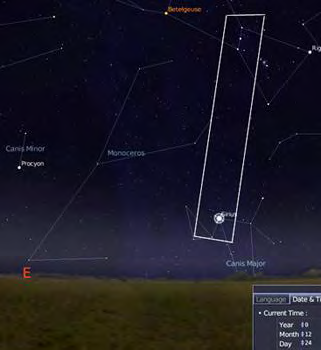
and assurance of the Sun having reached the very lowest point of his course, and therefore of
having arrived at the moment of his re-birth….
To the right, as the supposed observer looks at Sirius on the midnight of Christmas Eve, stands
the magnificent Orion, the mighty hunter. There are three stars in his belt which, as is well known,
lie in a straight line pointing to Sirius. They are not so bright as Sirius, but they are sufficiently
bright to attract attention. A long tradition gives them the name of the Three Kings.209
View from Egypt, 12-24-00
There are many examples of kings, queens, heroes and other figures being born under a star or other
celestial configuration and being presented with gifts. As we can see from all of the above, the theme of
the messiah‘s birth being attended by a star and/or ―dignitaries‖ is thus not original or unique to
Christianity.
27.
The Virgin Mary is the constellation Virgo, also known as Virgo the Virgin. Virgo is
also referred to as the “House of Bread,” and the representation of Virgo is a virgin
holding a sheaf of wheat. This House of Bread and its symbol of wheat represent
August and September, the time of harvest. In turn, Bethlehem, in fact, literally
translates to “house of bread.” Bethlehem is thus a reference to the constellation
Virgo, a place in the sky, not on Earth.
Virgo the Virgin and Mary: The identification of a ―virgin mother‖ with the constellation of Virgo is
common in history. For example, we have already seen that the Egyptian goddess Isis is a virgin mother,
as are Neith and several other mythical figures. Concerning the Virgo/virgin mother-goddess motif, in
Christ in Egypt, Murdock relates:
The identification of Isis with the Virgin is...made in an ancient Greek text called The
Katasterismoi, or Catasterismi, allegedly written by the astronomer Eratosthenes (276-194 BCE),
who was for some 50 years the head librarian of the massive Library of Alexandria. Although the
original of this text has been lost, an ―epitome‖ credited to Eratosthenes in ancient times has been
attributed by modern scholars to an anonymous ―Pseudo-Eratosthenes‖ of the 1st to 2nd centuries
AD/CE. In this book, the title of which translates as ―Placing Among the Stars,‖ appear discussions
of the signs of the zodiac. In his essay on the zodiacal sign of Virgo (ch. 9), under the heading of
―Parthenos,‖ the author includes the goddess Isis, among others, such as Demeter, Atagartis and
Tyche, as identified with and as the constellation of the Virgin. In Star Myths of the Greeks and
209 Carpenter, 16-17.
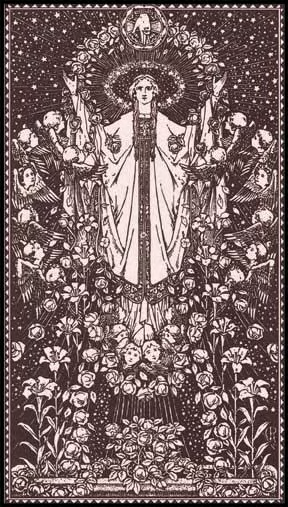
Romans, Dr. Theony Condos of the American University of Armenia translates the pertinent
passage from the chapter ―Virgo‖ by Pseudo-Eratosthenes thus:
Hesiod in the Theogony says this figure is Dike, the daughter of Zeus...and Themis...
Some say it is Demeter because of the sheaf of grain she holds, others say it is Isis,
others Atagartis, others Tyche...and for that reason they represent her as headless.210
Dr. Schmidt expands on the symbolism with regard to Isis/Nut:
Virgo, who now lends her name to this sign of the zodiac, is the heavenly Nut, the virgin mother of
Osiris, who was called the ―perfect one‖ and ―the ancient one,‖ and
symbolized light and goodness, concord or harmony, peace and
happiness. This virgin, the ―great mother,‖ the ―queen of heaven,‖ the
―inscrutable Neith, whose veil no mortal could lift and live...‖211
The identification of the Virgin Mary with Virgo was obvious and well known
enough such that the renowned theologian Albertus Magnus or Albert the
Great (1193?-1290) remarked ( Lib. de Univers. ):
We know that the sign of the celestial Virgin did come to the horizon at
the moment where we have fixed the birth of our Lord Jesus Christ. All
the mysteries of the incarnation of our Saviour Christ; and all the circum-
stances of his marvelous life, from his conception to his ascension, are
to be traced out in the constellations, and are figured in the stars.212
As concerns the ―House of Bread‖ and ―Virgo,‖ these are two separate
motifs, with a shared theme: Virgo relating to virginity and House of Bread to
the birth of the sun/son in Bethlehem.
Summarizing this astrotheological theme, Carpenter says:
Immediately after Midnight then, on the 25th December, the Beloved Son (or Sun-god) is born. If
we go back in thought to the period, some three thousand years ago, when at that moment of the
heavenly birth Sirius, coming from the East, did actually stand on the Meridian, we shall come
into touch with another curious astronomical coincidence. For at the same moment we shall see
the Zodiacal constellation of the Virgin in the act of rising, and becoming visible in the East
divided through the middle by the line of the horizon.
The constellation Virgo is a Y-shaped group, of which α, the star at the foot, is the well-known
Spica, a star of the first magnitude. The other principal stars, γ at the centre, β and ε at the
extremities, are of the second magnitude. The whole resembles more a cup than the human
figure; but when we remember the symbolic meaning of the cup, that seems to be an obvious
explanation of the name Virgo, which the constellation has borne since the earliest times....
At the moment then when Sirius, the star from the East, by coming to the Meridian at midnight
signal ed the Sun‘s new birth, the Virgin was seen just rising on the Eastern sky—the horizon line
passing through her centre. And many people think that this astronomical fact is the explanation
of the very widespread legend of the Virgin-birth.213
210 Murdock, CIE, 156.
211 Schmidt, 53.
212 Taylor, The Devil’s Pulpit. Dupuis (V, 96) recounts ―Albert le Grand‖ as saying: ―Nous savons...que le signe de la
Vierge Céleste montoīt sur l'horison au moment où nous fixons la naissance de Notre Seigneur Jésus-Christ...tous
les mystères de son incarnation divine et tous les secrets de sa vie merveilleuse, depuis sa Conception jusqu'à son
Ascension, se trouvent tracés dans les Constel ations, et figurés dans les Etoiles, qui les ont annoncés.‖ On the
previous page, Dupuis cites "Coesi Coel. Astron., p. 74."
213 Carpenter, 30-31.
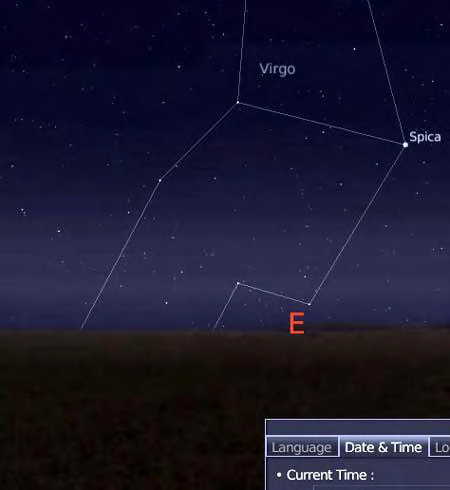
―The Virgin Birth is astrotheological, referring to the
hour of midnight, December 25th, when the
constellation of Virgo rises on the Horizon. The
Assumption of the virgin, celebrated in Catholicism on
August 15th, symbolizes the summer sun‘s brightness
blotting out Virgo. Mary‘s Nativity, observed on
September 8th, occurs when the constellation is visible
again.‖
—Acharya S/D.M. Murdock, Suns of God, 221
View from Egypt
The identification of the Virgin Mary with goddesses and other divine feminine forms such as Virgo has
been made since ancient times by Christians themselves, including the Egyptian Copts, who merged the
Virgin Mary with Isis in significant ways. There are several aspects the Virgin Mary shares with these
figures of myth and astrotheology. Indeed, the case has been made that Mary is but a mythical hybrid of
Judeo-Pagan religious figures and concepts of the time, including and especially the ―Triple Goddess.‖214
House of Bread (Virgo and Bethlehem): The Hebrew word ―Bethlehem‖ (לחם בית) means ―house of
bread‖ (Strong‘s H1035), while Virgo the constellation is typically shown as a maiden holding a sheath of
wheat, which, of course, is used to make bread.
Hazelrigg summarizes this symbolism in the Christian narrative:
According to the gospels: ―Joseph went up to Nazareth, which is in Galilee, and came into the
City of David, called Bethlehem, because he was of that tribe, to be inscribed with Mary his wife,
who was with child.‖ And here, in the City of David of the celestial expanse, called Bethlehem, the
sixth constellation, Virgo, the harvest mansion, do we discover Joseph (the constellation of
Bootes, Ioseppe) and his wife Mary with the child. Here is personified a constellation whose very
name (Ioseppe, the manger of Io, or the Moon) typifies the humble place of accouchement of all
the Virgin Mothers, and, as related to Virgo, the genesis of all Messianic tradition.215
Another interesting issue is the historicity of Bethlehem itself, as there is a debate as to whether or not
this town was occupied at the supposed time of Christ‘s alleged advent.216 As stated by Marisa Larson of
National Geographic:
Archaeological excavations have shown that Bethlehem in Judaea likely did not exist as a
functioning town between 7 and 4 B.C., when Jesus is believed to have been born. Studies of the
town have turned up a great deal of Iron Age material from 1200 to 550 B.C. as well as material
from the sixth century A.D., but nothing from the first century B.C. or the first century A.D. Aviram
Oshri, a senior archaeologist with the Israeli Antiquities Authority, says, ―There is surprisingly no
214 See Murdock‘s Suns of God and Christ in Egypt for more on Mary and the Goddess.
215 Hazelrigg, 108.
216 See ―In what town was Jesus born?‖ by B.A. Robinson.
archaeological evidence that ties Bethlehem in Judaea to the period in which Jesus would have
been born.217
It appears that the ―little town of Bethlehem‖ is an interpolation created to fulfill prophesy from the Old
Testament. We can see the relationship clearly when comparing Genesis 49:10 and Micah 5:2 with
Matthew 2:1-6:
The scepter shall not depart from Judah, nor the Jesus is a descendant of Judah... After Jesus is
ruler‘s staff from between his feet, until he comes to born in Bethlehem, Herod asks the wise men
whom it belongs; and to him shall be the obedience where he is. They answer that he is in Bethlehem,
of the peoples. (Gen 49:10)
―so it is written by the prophet: ‗And you, O
Bethlehem, in the land of Judah, are by no means
But you, O Bethlehem, Ephrathah, who are little to least among the rulers of Judah; for from you shall
be among the clans of Judah, from you shall come come a ruler who will govern my people Israel.‘‖ (Mt
forth for me one who is to be ruler in Israel, whole 2:1-6)
origin is from old, from ancient days. (Micah 5:2)
Concerning this issue, Murdock concludes, ―Like so many other places in Israel, Bethlehem was first
situated in the mythos and then given location on Earth.‖218
28.
There is another very interesting phenomenon that occurs around December 25th,
or the winter solstice. From the summer solstice to the winter solstice, the days
become shorter and colder. And from the perspective of the northern hemisphere, the
sun appears to move south and get smaller and more scarce. The shortening of the
days and the expiration of the crops when approaching the winter solstice
symbolized the process of death to the ancients. It was the death of the sun. And by
December 22nd, the sun’s demise was fully realized, for the sun, having moved south
continually for six months, makes it to its lowest point in the sky. Here a curious thing
occurs: the sun stops moving south, at least perceivably, for three days.
Regarding the motif of the three-day entombment and rebirth of the sun, Murdock summarizes:
...many of the world‘s crucified godmen have their traditional birthdays on December 25th
(―Christmas‖). This date is set because the ancients recognized that (from a geocentric
perspective in the northern hemisphere) the sun makes an annual descent southward until after
midnight of December 21st, the winter solstice, when it stops moving southerly for three days and
then starts to move northward again. During this time, the ancients declared that ―God‘s sun‖ had
―died‖ for three days and was ―born again‖ after midnight of December 24th. Thus, these many
different cultures celebrated with great joy the ―sun of God‘s‖ birthday on December 25th.219
The significance of this solar death/rebirth and its allegorical connection to various godman is confirmed
by many scholars, including astronomer Dr. Krupp as concerns Osiris:
The myth of Osiris involves his own death and resurrection, a theme that echoes the daily cycle
of the sun‘s death and its rebirth at dawn.220
Concerning the annual solar death and resurrection, Frazer relates:
In the Julian calendar the twenty-fifth of December was reckoned the winter solstice, and it was
regarded as the Nativity of the Sun, because the day begins to lengthen and the power of the sun
to increase from that turning-point of the year. The ritual of the nativity, as it appears to have been
celebrated in Syria and Egypt, was remarkable. The celebrants retired into certain inner shrines,
from which at midnight they issued with a loud cry, ―The Virgin has brought forth! The light is
217 Larson, ―Bethlehem of Judaea—or of Galilee?‖
218 Acharya, CC, 190.
219 Acharya, CC, 154.
220 Krupp, EAS, 16.
waxing!‖ The Egyptians even represented the newborn sun by the image of an infant which on his
birthday, the winter solstice, they brought forth and exhibited to his worshippers. No doubt the
Virgin who thus conceived and bore a son on the twenty-fifth of December was the great Oriental
goddess whom the Semites called the Heavenly Virgin or simply the Heavenly Goddess; in
Semitic lands she was a form of Astarte...
Thus it appears that the Christian Church chose to celebrate the birthday of its Founder on the
twenty-fifth of December in order to transfer the devotion of the heathen from the Sun to him who
was called the Sun of Righteousness [Jesus]....221
The solar and vegetative death and re-conception occur at the vernal equinox, with a birth at the winter
solstice. Discussing the former motif vis-à-vis Attis, Dr. George R.H. Wright states:
The fertility cult of the dying god Attis and the Great Mother Cybele was introduced to Rome from
its seat at Pessinus in Asia Minor in 204 BC... Attis the son of a virgin mother (Nana) sacrificed
himself by a tree and the great festival of the cult centered around the raising up of a sacred
(pine) tree swatched like a corpse in a winding sheet to which was fastened an effigy of the young
dying god.... In Spring time, precisely at the vernal equinox, there was enacted a three day cycle
of death (on the tree), burial and resurrection.... At the dead of night a light shone in darkness and
the tomb stood open—the god had risen from the dead. And the following day, March 25th, the
resurrection was made fit subject for general rejoicing...222
Because of the cycles of nature, there is a seemingly confused dichotomy with regard to the rituals
signifying this three-day solar death and resurrection, as found in several religions and cults. In the case
of Attis, for example, the ritual fell on or around the 25th of March, the vernal/spring equinox, a day that
marks the ―rebirth of the sun,‖ when the ―light of day overpowers the darkness‖ or when the day becomes
longer than the night. So, in the solar death-resurrection motif we have combined allegories: The daily
cycle, as well as the winter solstice and the spring equinox.
M.M. Mangasarian, an ex-Presbyterian minister, expands on this comparison and summarizes:
The selection of the twenty-fifth of December as [Jesus‘s] birthday...having been from time
immemorial dedicated to the Sun, the inference is that the Son of God and the Sun of heaven
enjoying the same birthday, were at one time identical beings. The fact that Jesus‘ death was
accompanied with the darkening of the Sun, and that the date of his resurrection is also
associated with the position of the Sun at the time of the vernal equinox, is a further intimation
that we have in the story of the birth, death, and resurrection of Jesus, an ancient and nearly
universal Sun-myth, instead of verifiable historical events.223
29.
And during this three-day pause, the sun resides in the vicinity of the Southern
Cross, or Crux [Australis], constellation.
In the solar mythology, the sun is said to be hung on a cross during the first part of the solar cycle, as it is
also at the equinoxes. This period is likewise three days or a triduum. Gerald Massey explains this theme:
In the Ritual [Egyptian Book of the Dead] the reconstructed and rearisen mummy says, ― I am the
great constellation of Orion (Sahu), dwelling in the solar birthplace in the midst of the spirits.‖ That
is, he rises as Orion, the Star in the East that once showed the place where the babe lay, or
where the reborn god arose on the horizon of the resurrection....
At that time the Southern Cross, on the opposite side, was a figure of the Autumn crossing, the
sign of the sacrificial offering, the crucified of the solar allegory, so far as the suffering,
descending, diminishing sun was ever represented as the crucified; and every time Orion the
conqueror of darkness rose, the Cross of Autumn set...224
221 Frazer, GB (1922), 303-305.
222 Wright, 92.
223 Mangasarian, 35-36.
224 Massey, NG, II, 437.
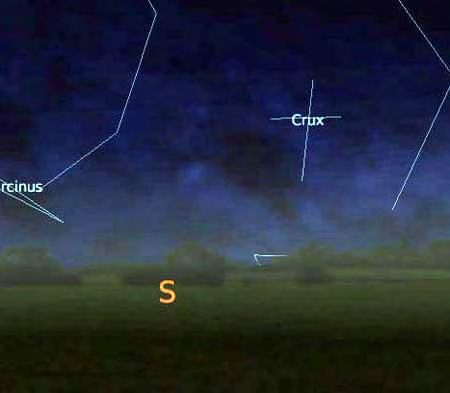
The Southern Cross (Crux)
as seen after midnight on Dec. 25, 1 AD/CE rising in the south
It is important to point out that, just like that of Virgo, the relationship between the divine child and the
cross is figurative and symbolic, and different scholars have varying hypotheses regarding which
equinox/solstice the Crux was most traditionally oriented to, mythologically speaking. Regardless, the
association is clear in the astrotheological mythos.
The visibility of the stars and changing of the sky vis-à-vis the Southern Cross is described by
astronomers David Ellyard and Wil Tirion:
...From 35 degrees south latitude, stars south of minus 55 degrees declination are always in view
(if the sky is clear). So we can always see the Southern Cross and the Pointers, though you will
find them in different parts of the sky depending on the time of the night and the year....
...the Southern Cross, which is high in the south-east in the early evening in May, will be high in
the south-west three months later. In November it will be low in the south-west (and almost
upside down), while an early February evening will find it low in the south-east but rising.225
It has been claimed that the Southern Cross is not visible from the northern hemisphere and that,
therefore, the Egyptians, for one, could not have included it in their myths. In the first place, the fact is that
the Southern Cross is indeed visible in the current era from anywhere south of 27° N, which includes a
large portion of Egypt, such as some of the most important sites like Abu Simbel (21° N), Luxor (25° N)
and Aswan (24° N), as well as some of the most ancient sites like Nabta Playa (22° N), where, again,
there is an ancient observatory at least 6,000 years old. Secondly, at the time when the gospel story
purportedly took place, the Southern Cross was visible just south of 32° N, as related by astronomer Dr.
Chris Dolan:
The Southern Cross is only visible from sites farther south than 27 degrees north latitude. At the
time of Christ, however, it was visible from the latitude of Jerusalem (almost 32 degrees N).226
As we can see, if the baby Jesus had really and truly been born in Judea, to the south would have
appeared in the sky the figure of the Southern Cross. Moreover, keen observers of the skies like the
Egyptians surely would have noticed this striking stellar configuration centuries before that time,
especially since all of Egypt is south of 32 degrees north latitude. Indeed, it is asserted that the Egyptians
may have been quite aware of the Crux:
225 Ellyard, 12-13.
226 Dolan, ―Crux,‖ www.astro.wisc.edu/~dolan/constellations/constellations/Crux.html
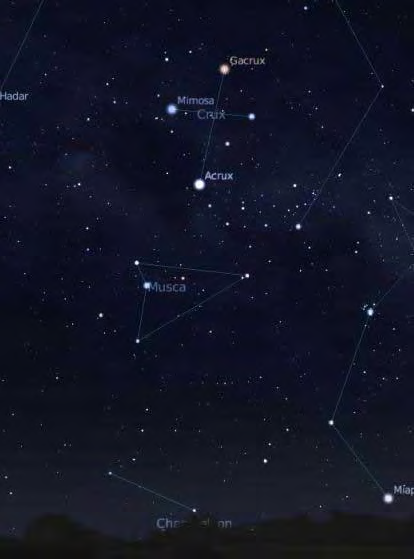
At the latitude of Luxor...the Southern Cross would have been high in the southern sky at the
winter solstice. As the first rays of the rising sun flooded the inner sanctum of Karnak Temple, the
Southern Cross would still have been visible to the south...227
Southern Cross/Crux
View from Luxor, Egypt (25° N)
c. 1400 BCE
4:00 a.m., 12/25
It is likewise claimed that the Southern Cross was not delineated as a separate constellation until
centuries after it was purportedly incorporated into mythology in this manner, because it is not overtly
described until that time.
In view of all the astrotheological information that clearly was passed along within religion and mythology,
we could suggest that this motif itself is evidence of the constel ation‘s significance in ancient times, even
if it was not called the ―Southern Cross.‖ Certainly, when all things are weighed, and we discover
mythology and astrotheology throughout the rest of the gospel story—as well as the knowledge that the
cross itself is a solar symbol dating back thousands of years—we are wise to consider that this striking
motif is yet another of the same type.
It is important to point out that interpretations vary in regard to the cross symbolism, as different religions
supply different information and thus interpretation. Indeed, there are other reasons for the three days
and the cross motif, such as the vernal equinox, so in fact we can scientifically place it in the realm of
mythology.
The fundamental element common among these mythical variations is that the cross is astronomical,
astrological or astrotheological in nature. As we have seen abundantly, the cross is a solar symbol that
predated Christianity by many centuries, as did the image of the human figure on a cross.
227 Weidner, 390-391.
30.
And after this time on December 25th, the sun moves one degree, this time north,
foreshadowing longer days, warmth, and Spring. And thus it was said: the sun died
on the cross, was dead for three days, only to be resurrected or born again. This is
why Jesus and numerous other sun gods share the crucifixion, three-day death, and
resurrection concept.
With the circle of the zodiac being 360 degrees, and the solar year approximating 360 (+5) days, the
ancients perceived the sun as moving one








